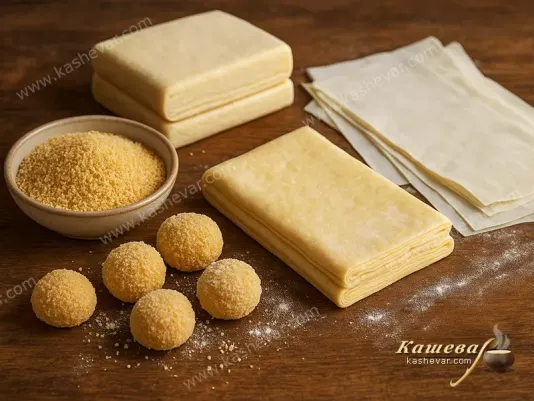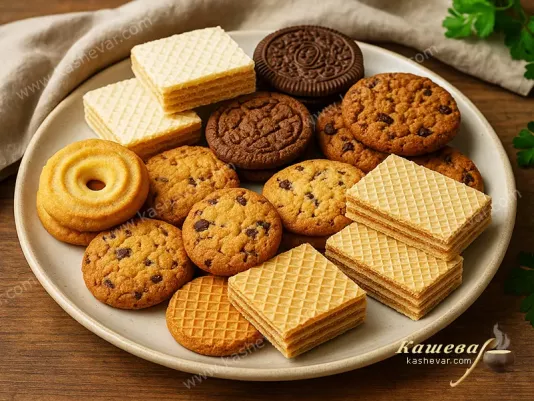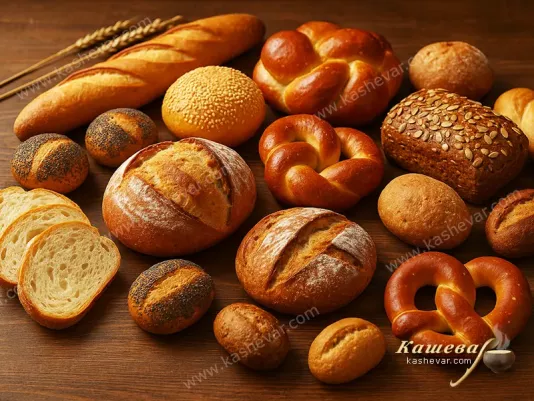Bread and Baked Goods
Bread and baked goods for me are not just everyday food but a symbol of home warmth and hospitality. I have always considered bread the foundation of cuisine, as it unites different cultures and traditions. In my home, there are always several types of bread: white for every day, rye for hearty dinners, as well as buns or baguettes that add variety to the menu. I also include dough in different forms – from puff pastry to phyllo – which helps create both simple pies and complex festive dishes. I like that bread and pastries can change the atmosphere: as soon as freshly baked bread or fragrant buns appear on the table, the whole family gathers together. For me, these products are always more than just food, as they carry emotions, memories, and a sense of comfort.
Different Types of Bread and Baked Goods
Bread as the Basis of the Daily Diet
For me, bread has always been an irreplaceable product in the kitchen. White bread I use for light breakfasts with butter or jam, it is perfect for sandwiches and toasts. Rye bread I value for its rich taste and benefits – it pairs ideally with soups and cheese appetizers. The baguette has become my favorite option for dinner: its crispy crust and soft inside make it a universal addition to both salads and main courses. Lavash I often use instead of classic bread, wrapping vegetables, meat, or cheese in it. And tortilla has become a wonderful base for quick snacks – from quesadillas to rolls with different fillings. Each of these types of bread has its role in my diet, and thanks to such variety I can create new combinations of dishes every day. I am convinced that bread is not only a traditional accompaniment but also an important element of culinary creativity, giving dishes completeness.
Baked Goods in Traditional Cuisine
I have always admired how rich traditional cuisine is in baked goods. Each culture has its own specialties: from fluffy buns to thin pancakes or pies. In my home, homemade pies with different fillings are frequent guests – from sweet apples and berries to hearty potatoes or cabbage. They are not only tasty but also bring warmth, reminding me of recipes passed down from grandmothers and mothers. Pancakes for me are a special story: thin, delicate, they can be made as a dessert with honey or jam, or as a main dish with meat or mushrooms. Puff pastry helps create turnovers and croissants that always look festive, even if it is just an ordinary breakfast. And phyllo dough allows me to cook dishes inspired by Mediterranean cuisine. Baked goods in traditional menus are always more than just food, as they unite the family at one table and create a special atmosphere.
Buns as the Basis of Modern Dishes
Buns for me have always been more than just a side to main dishes. I often use them when making homemade burgers: a soft and airy bun perfectly holds the filling while remaining tender in taste. Hot dog buns also take a special place in my kitchen, as they allow me to quickly prepare a hearty snack for the whole family or guests. Classic round buns I like to serve with soups or salads – they soak up sauces and gravies well, making the dish more harmonious. In my experience, it is important that buns always stay fresh, so I sometimes bake them myself: this allows me to control the ingredients and add grains or seeds to the dough. In any version, buns remain a universal product that is easy to combine with different ingredients. They can serve as the base for hearty snacks or a simple addition to a dish, creating a feeling of completeness in the meal.
Lavash, Focaccia, and Tortilla in Different World Cuisines
Lavash I discovered as an incredibly convenient and versatile bread. It is thin, elastic, and suitable for the most diverse dishes. I often wrap vegetables, cheese, or meat in it, making a quick snack or light dinner. On a festive table, lavash becomes the base for rolls with various fillings, which always look impressive. Focaccia for me is an example of how simple bread can turn into a refined dish. Its aroma with olive oil, rosemary, or olives creates a unique atmosphere, and I often cook it as a side to soups or salads. Tortilla has become my favorite base for Mexican dishes. I make quesadillas or tacos from it, adding different fillings – from vegetables to meat or seafood. It is convenient because it allows me to quickly create a complete dish. These types of bread demonstrate the richness of the world’s culinary traditions and provide the opportunity to diversify the home menu without complicated preparations.
Bread and Baked Goods in the Modern Diet
I am convinced that bread and baked goods remain the foundation of nutrition, combining tradition and modernity. Each of them has its own role: a baguette or loaf is suitable for everyday dishes, lavash and tortilla are convenient for quick snacks, focaccia adds a special aroma, and buns create opportunities for hearty meals. Semi-finished products such as puff pastry or phyllo dough greatly simplify cooking, while bread crumbs open up space for culinary experiments. Cookies and waffles bring coziness to weekdays, and different types of bread form the basis of the daily menu. For me, these products are not only food but also part of a lifestyle: they help quickly create new dishes, preserve family traditions, and bring a feeling of home warmth.


